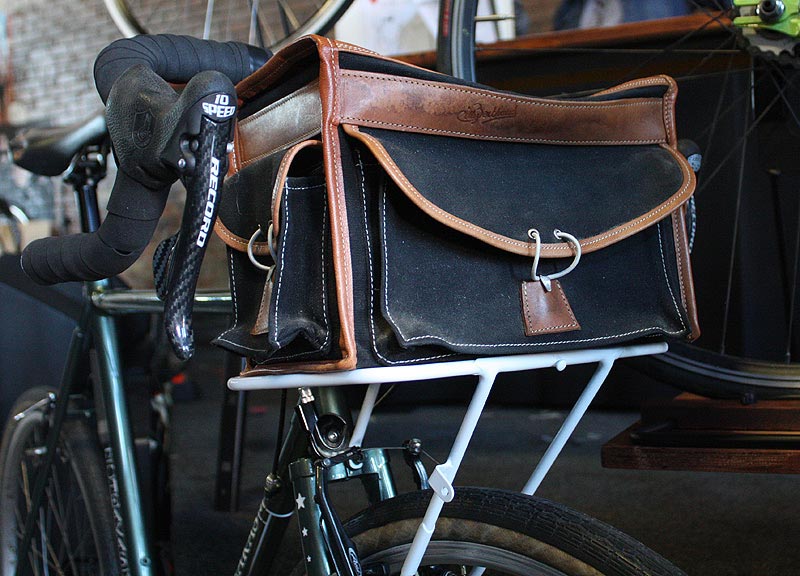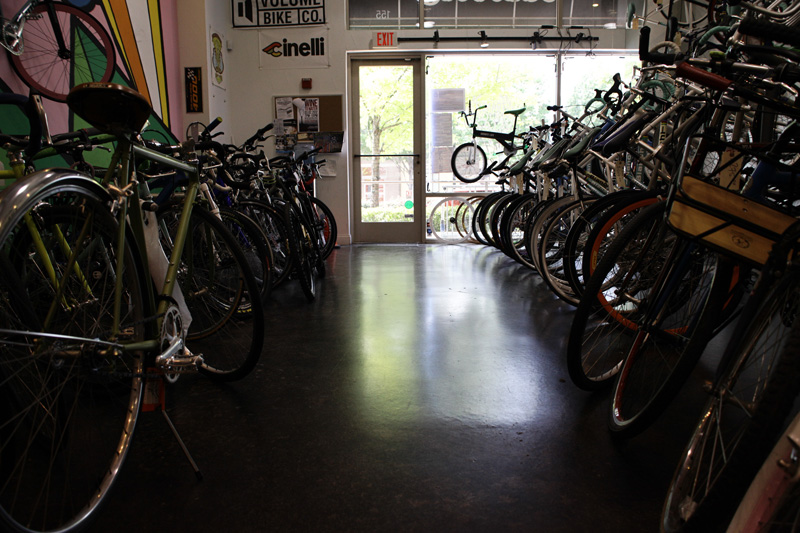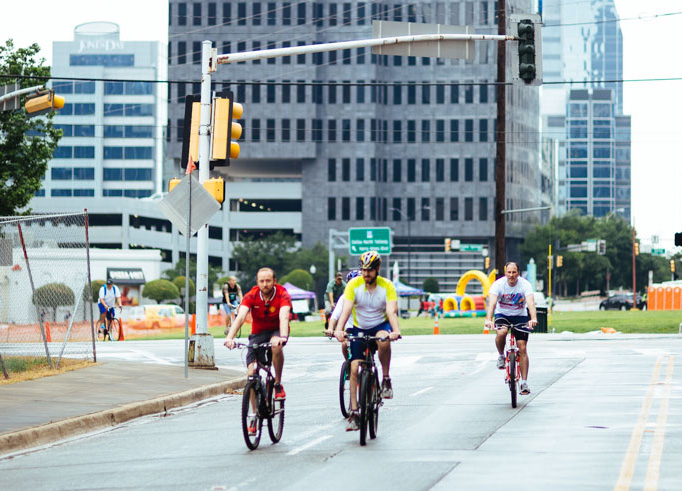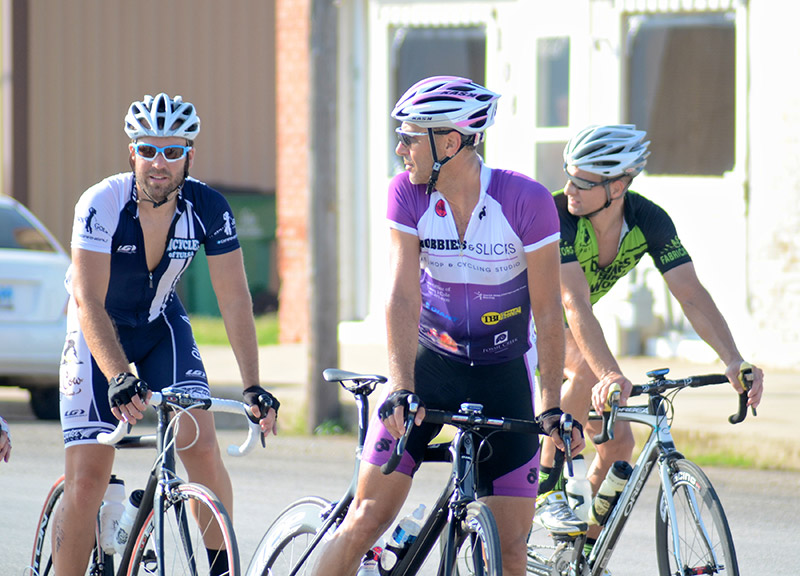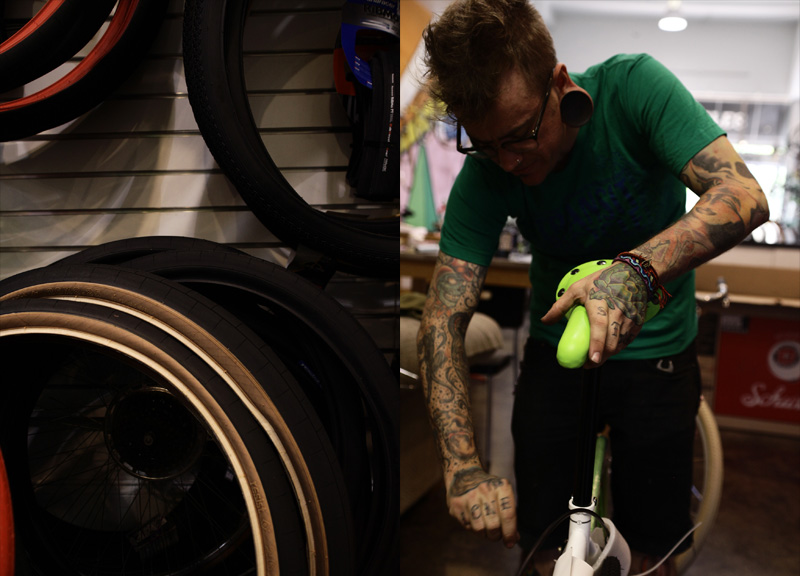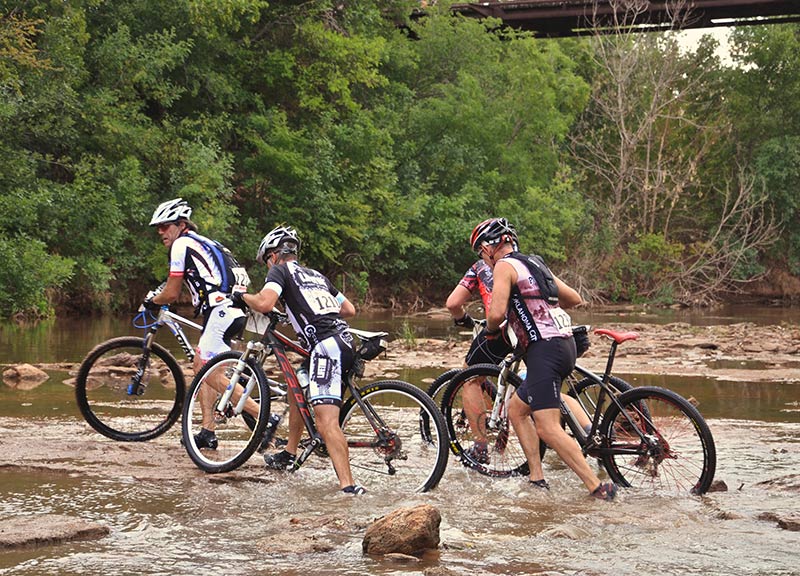Everything You Need To Know About Buying a Bike in Dallas.
Welcome to Like a Pro our recurring feature where, every so often, we show off our expertise in very specific areas pertaining to life in Dallas. We're not trying to brag here. We're just trying to help you enjoy the city like the pro that we know you can be.
In a place like Dallas, with its non-winters, bike riding can really be a year-round activity. This is a fact that more and more people are beginning to realize, too, as evidenced by the fact that so many new bike shops have been opening up of late.
Between the weather and the plethora of places to shop, now's a great time to buy a bike in Dallas. Only, that's a task that's easy said than done. Once you really start looking into it, you'll find there are just so many options when it comes to bicycles — so much so that it's rather overwhelming and the temptation to run to Target to just buy the cheapest thing possible will be very real.
But you really shouldn't do that.
Between having recently gone through the bike shopping process myself and some tips I learned from a former pro rider/shop owner who has been riding since the '70s and asked to remain anonymous (from here on out let's just call him “Mick”), we're here to show you a better way. Whether buying your first bike or just your first in a long time, Mick and I have some tips to help guide you through the process.
See Also: Road Rules. // How Not To Be a Total Dick When Encountering A Cyclist On The Streets of Dallas.
Just know this before heading in: A bicycle is ideally something that should last for several years, so investing a little time doing the appropriate research ahead of time is well worth it.
Determine what type of bike you need. Ask yourself what type of biking you'll be doing. This will help narrow down the field quite a bit. Are you going to be using it out on the trails or covering rocky terrain? Then you want a sturdy mountain bike. Are going to cover yourself in spandex from head-to-toe and ride around White Rock Lake? Then a carbon fiber road bike might be your best bet. Are you going to commute to work or leisurely go to the grocery store? A city bike with rack capabilities might be the way to go. Do you drink PBR and wear tight jorts? A fixed gear will help you fit in with your hipster buddies. Think carefully about why you want a bike in the first place, and it can help you narrow down your choices.
Budget accordingly. Keep in mind that more expensive doesn't always mean better quality. You can reach a certain point where you're paying for technology or features that you're not going to use. If you're super serious about taking up cycling, then look to spend as much as between $750 and $1,000. Also be sure to include some room in the budget for a few must-have accessories like a helmet, lights for night riding and a lock. Anything else can wait. Says Mick: “[Get] a better bike in the beginning. Don't bother upgrading your bike. In the long run, between labor and parts, you'll be spending more. Do it right from day one.”
Visit local bike shops. Supporting a local businesses is always awesome, sure, but making in-roads at a LBS (that's what we pros call a “local bike shop”) will also be a gift that keeps on giving. For starters, it'll be where you will inevitably go to get a tune-up or some repair that you won't be able to do yourself. And a lot of shops around to own host social rides too, existing as part of the greater cycling community. Obviously, the way they do all of this is through the support of the local cyclists that patronize their shops. So you're not just buying into a culture, you're supporting one. Before you head out to visit some, there are a few things to keep in mind:
• Most stores will only have a few brands. This is important to know. Unless you're going to shop at a big corporate place, it might be surprising to see an LBS only carry three brands. The sad reality, says Mick, is that bicycle companies want shops to carry a variety of their models, which can get expensive real fast. If you want to really try out a wide variety of bikes, make a day of it and visit several shops. Do some research online. If you've gone to the bike shops and you've found a few bikes that feel or look good, write the names down and spend some time going on bicycle forums or review sites to get a feel for the reputation and practicality of the bikes you're considering. Of course, because it's the Internet, take the info with a grain of salt, even if online research is also a great way to solidify your decision.
Make sure the bike feels good to ride. OK, so you've done your research and you now know the difference between frame types and wheel sizes. But that's not enough. Hell, you can do everything on this list and none of it matters if a bike isn't comfortable. Go and test ride every one of them that catches your eye. Notice how they handle doing turns and how they shift gears. Adds Mick: “No one bike fits all. It's not like a car where it's going to get you where you need to go if you continue to put gas in it. It's a personal choice and not every bike is going to work with each person.”
Make the proper adjustments. Once you've bought your shiny new bike, you need to make sure the bike fits properly before you leave the shop. Ideally, the employees will be able to assist you in adjusting the height of the seatpost, as well as the angle of your seat and the stem. Bad seatpost height contributes to a lot of discomfort, especially for more novice riders.
Hit the road. Now that you have you shiny new bike, go out there and enjoy it. Once you've become comfortable, make sure you check out the many social rides around town each week. They're super fun. You'll like them. I do. Maybe we can be best friends!
Photos by Nathan Patterson, Heather Abbott, Hance Taplin and Scott Mitchell.
• Don't expect too much haggling. Buying a bike isn't like buying a car. According to Mick, most bicycle shops don't discount due to the small margin that shops get after actually buying the bikes. If you're looking for a deal, he says, look around the end or beginning of the year when shops are trying to get rid of last year's models. Also, if you're looking for accessories, you can get some good bargains around November and December, which is right after the time that the trade shows occur and shops want to clear out their inventory to make some room for the new stuff.
• Look for good stores and salespeople. There are some really great bike shops in town, but there are also a handful of stores out there that just want to get you on the most expensive bike possible and make a pretty penny off you. The best salespeople and stores will be the ones that get into the nitty-gritty of why you're buying a bike, what you're going to use it for and so on. The more questions they ask you, the easier it will be for them to find you a good bike. So be on the lookout! The nosier the salesperson seems, the likelier it is that they're one of the good guys. It's also good to keep in mind that not every salesperson is going to be an expert on every type of bike. Someone that is knowledgeable in mountain bikes might not know much about the intricacies of carbon fiber road bikes or vice-versa.
